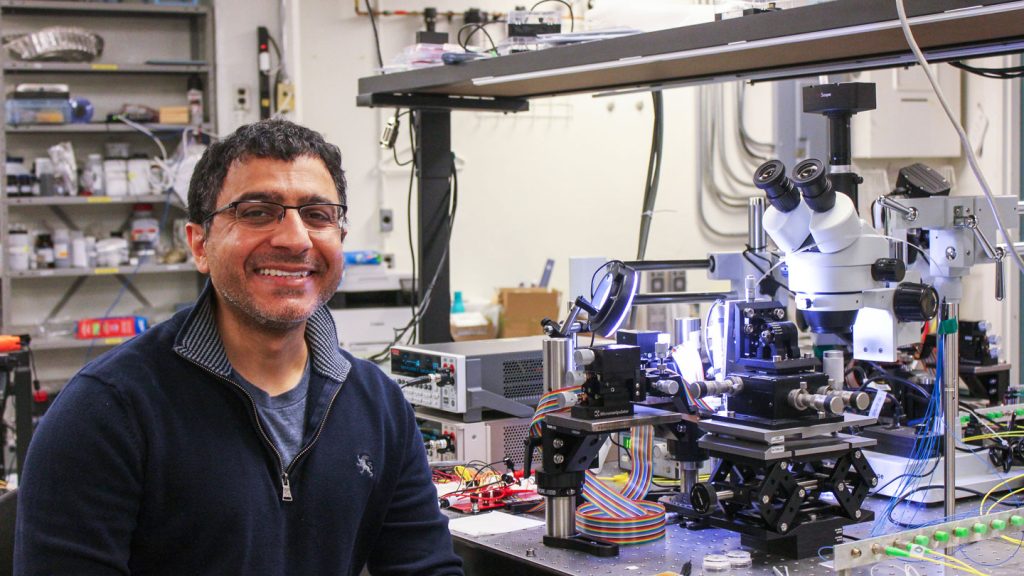Bhavin Shastri, a researcher, is leading the way in the development of photonic computing, which relies on light instead of electricity to perform calculations. This technology is still in its early stages, but it has the potential to be more powerful than traditional electronic computers for certain applications. Shastri’s photonic computer chips are designed to mimic the human brain, creating a neural network on a chip. By using light instead of electricity, these chips can potentially be more energy-efficient and faster than traditional computers.
Shastri’s interest in light started from a young age, and he has always been fascinated by how it can be manipulated. He was inspired by an experiment he saw as a child involving a laser and water flowing downward, which sparked his curiosity about the possibilities of using light for computation. During his time in college and as a postdoc, Shastri worked on machine learning and artificial intelligence research, which led him to explore using light to compute data. He realized that photonics could overcome some of the limitations of electronics, particularly in terms of memory access and calculation speed.
The development of photonic computers offers a new way to approach computing and could revolutionize the field. Standard electronic computers are reaching their limits in terms of speed and energy consumption, especially for applications such as AI and image processing. By creating neuromorphic photonic computers that mimic the brain’s architecture, Shastri hopes to build machines that are faster and more energy-efficient than traditional computers. These new computers could be used for industry applications and research in fields like radio signal optimization and image processing.
Shastri’s experimental work on chip-sized photonic devices has shown promising results, with a chip containing 100,000 neuron-like components capable of performing billions of operations per second. His groundbreaking research in this field has laid the foundation for using photonics to create physical neural networks. Shastri’s ability to bring together different fields and his vision for the future of computing have earned him praise from his colleagues. While photonic neuromorphic computers are not yet ready for widespread use, they hold great potential for specific research and industry applications, particularly in areas that require high-speed processing and energy efficiency.
Shastri’s passion for light and fascination with its properties have been the driving force behind his research in photonic computing. His childhood dream of working with light has become a reality, and he is committed to transforming the world of computing through his innovative work. With his team of researchers, Shastri is pushing the boundaries of what is possible with photonic computing and is dedicated to creating machines that are more energy-efficient, faster, and more powerful than traditional computers. Though the field is still in its infancy, the potential for photonic computing to revolutionize the way we approach data processing and computation is immense.


